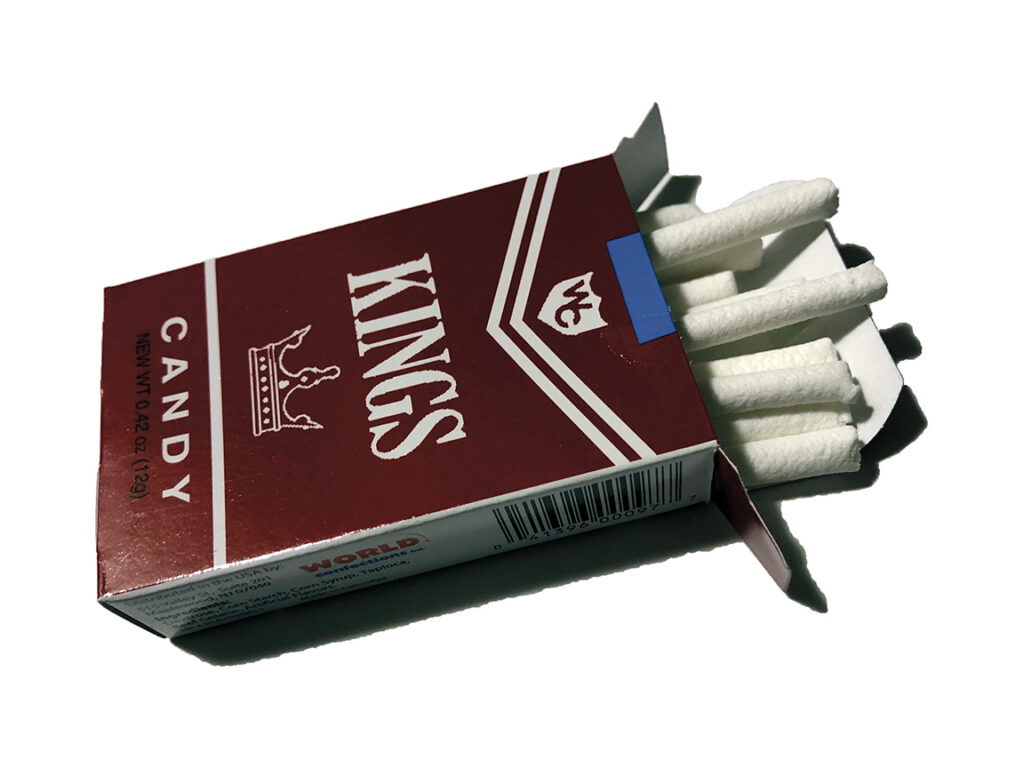
Dorri Partain
Contributor
What type of sweets will you find in your trick-or-treat bag? Candies that were once popular may be controversial today.
Candy “cigarettes” first appeared as a novelty item in the 1930’s, following the popularity of chocolate and bubble gum shaped as cigars or cigarettes.
Packaged in boxes that closely resembled actual cigarette packaging, the artwork often mimicked popular brands of smokes with similar names. The candy sticks, depending on the manufacturer, were dipped into a red coloring on one end to mimic a lit cigarette.
Concerned that children would be led to try tobacco products at an early age, candy cigarettes were banned in the state of North Dakota from 1953-1967.
Candy cigarettes were packaged in two sizes, with the larger box containing 10 candy sticks. Smaller boxes containing four sticks were the more popular choice for Halloween distribution.
Composed of a mixture of dextrose (sugar), corn starch, tapioca, beef gelatin, and artificial flavor, the extruded shape is cut or broken into 2.5-inch pieces; the taste is similar to toothpaste.
In 2009, the Food and Drug Administration banned the production of candy marketed as cigarettes under the Family Smoking Prevention and Control Act, though most manufacturers had dropped the use of the word “cigarettes” on the candy packaging by 1970.
Distributed as World’s King Size Candy, this package from World Confections of Maplewood, New Jersey may resemble a cigarette box, but is clearly labeled as candy. The candy sticks are a product of Colombia, South America.
















